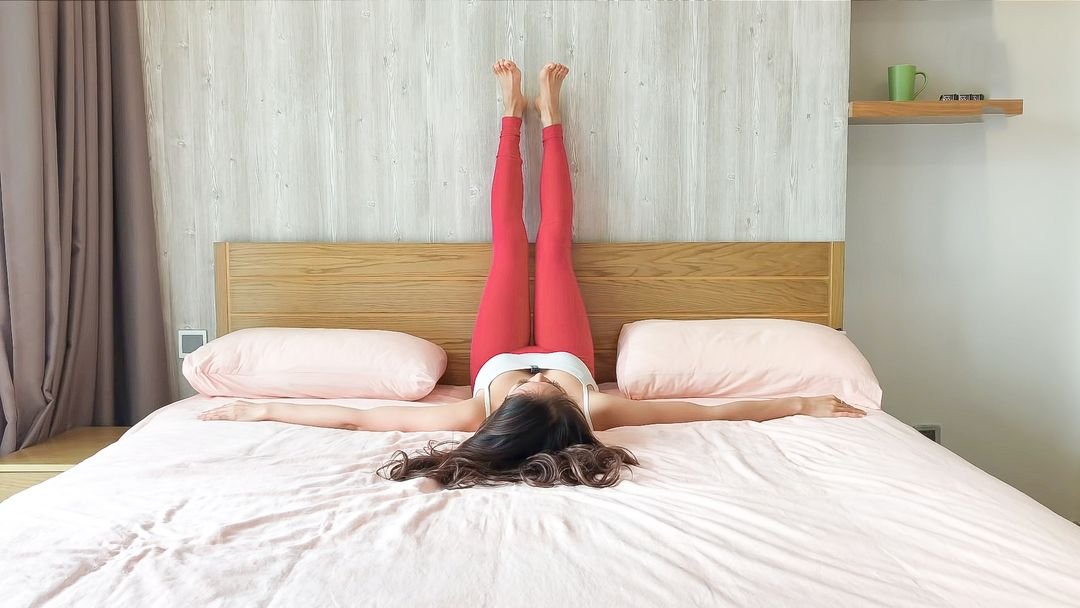6 Somatic Practices That Can Change Your Life
When I began my business, a large focus for me was strategies and systems. Because I bought into the idea that if I just worked hard and hustled my way to success, it would make it seamless and easy. But really, what I didn't know at the time (that I'm so grateful that I know now) is that somatic is such a powerful, cool tool that you want to weave into whatever goal that you have in mind.
I'm really pumped and excited to pull back the curtains and share with you how you can begin to incorporate somatic practices into your daily routine.
With somatic work and practices, what your focus is on is your bodily sensations and regulating your emotional system. This is so powerful because it helps you to rewire thought patterns. It helps you to focus on posture and be attentive to your body. It helps you to rewire your brain and to create a more balanced state. And it helps you to calm and regulate your nervous system.
Now, it sounds crazy, but it's not even anything crazy or difficult that you have to do that helps you to create optimal health in your body. And that's what I love so much about somatic work. With somatic work, you get to experience so much relief because you're renegotiating different experiences or events that have happened in your body – and that's what I love so much about it.
Now, I do want to say that somatic work isn't a one-and-done thing.
You don't just do one of these practices or follow this routine and then kind of go about your way. It's something that you're going to want to regularly commit to because your body knows best, your body keeps score, and you want to take good care of your body. So for me, when I learned about somatic practicing, I was intentional about how I could weave this into my daily routine because I wanted to create a calm and regulated nervous system. I wanted to create that relief.
And so I'm going to walk you through a typical routine that you could begin to incorporate some of these practices, and you'll notice that they don't even take a lot from you.
1. Take A Cold Shower To Elevate Your Mood
This may sound extreme, but one of the things that I now do that I now have incorporated into my morning routine is take a warm shower. And then after I take that warm shower, for about 25 seconds, I just stand in cold water. This cold exposure sends a shock to the body, and it sends electrical impulses from the brain to the nervous system, which calms your body and acts almost like an antidepressant. This can elevate your mood and reduce stress.
2. Move Your Body To Build Awareness
The next thing that I like to do is to just shake and dance and move my body. Sometimes I do it in the shower or while I’m brushing my teeth. And what's so powerful about this silly movement and motion is that it impacts both your physical and your mental body. It creates that mind-body connection. It also helps to build awareness of your body, reduce stress hormones, and because you're doing that mind-body connection, it helps you to feel relaxed and it helps you to feel safe and held in your body.
If you're a singer, another strategy you can begin to incorporate is singing or humming, or even gargling. And this is powerful because it activates the vagus nerve. Research shows that humming, singing, gargling, and things like that is a self-soothing sound, so on a physical level, it helps to reduce stress. It induces calmness and it helps to lower your heart rate and your blood pressure. It produces this powerful neurochemical similar to oxytocin, which is also the love chemical. So it creates a little bit more calmness, more regulation, and a lot more self-love.
3. Check-in With Yourself
Another strategy that I like to do is I like to check in with myself about halfway through my day. This may be midday, lunchtime, or whenever you feel like you have a down moment. I like to just get in touch with my body and I'll sit there and I just ask myself, “what is it that I'm feeling in this moment?”
As I sit with that emotion, I name that emotion that I'm currently feeling: sad, angry, overwhelmed. Then I ask myself, “where am I feeling that in my body?” When I notice where I'm feeling that, let's say, for example, I'm feeling it on my chest, I'll bring my hands together and gently rest them on that part of my body. I imagine myself breathing, breathing life into that part of my body, breathing security into that part of my body. It helps me to feel very calm and again, regulated.
Often when I'm doing this, I'll start to sway my body from left to right. As I'm doing that, I'll tune into my body and I'll say, what is it that this part needs from me here and now? And then I commit to that small action. Sometimes that looks like a small break, sometimes that looks like some hydration or some water, and sometimes that looks like asking for my help. But again, I trust that my body knows best and I tune into my intuition and listen to what I can do to support myself. This helps me to honor my emotional needs and to connect with myself on a deeper level.
4. Progressive Muscle Relaxation to Break the Tension In Your Body
Another midday activity that I love to do is progressive muscle relaxation. If you're not familiar with progressive muscle relaxation, essentially you're tightening different parts of your body and your muscles, right? Our body is already dealing with stress, and so we're bringing awareness to this to eventually calm ourselves.
For example, you may start with your fists and tighten your fists and then release them. It may be your arms. You tighten it and then release it. It may be your eyebrows and your forehead. You tighten it and you release it. And you slowly move down your body progressively in a calm flowy motion down into your feet.
The power of progressive muscle relaxation is it almost breaks the cycle of the tension and the stress that you're feeling in your body. And you'll notice yourself starting to feel calmer. You'll notice reduced anxiety and you'll notice often reduced fatigue that you feel. And this is why I love it for midday because I'm not like a coffee or caffeine drinker. And so often it gives me a burst of energy because I feel less fatigued and more ready to take action.
5. Journaling to Clear Your Mind
I have two bedtime routines I like to incorporate. The first is journaling. Just journaling out my gratitude for the day and journaling what thoughts came up for me for the day. The reason that this is important is that I hate to go to bed with such a heavy or overwhelmed spirit and heart. Processing and journaling my thoughts helps me to release them from carrying them so that it's not a weight that I have to sleep with. Often what comes up for me at night is like the pressure of what's coming up the next day. What training do I need to do? What topics do I need to come up with? And when I just get it out on paper and out of my head, I notice that I go to sleep with a more clear mind.
6. Leg Elevation to Increase Blood Flow To Your Heart and Head
The second bedtime strategy that I love to do is to lie in my bed with my butt and legs up against the headboard almost like it's my wall. And this is so amazing because research says that when your legs are elevated above your heart, you're reducing the pressure that you're feeling in your legs and you're creating more blood flow to your heart and your head.
It's a powerful technique that you can do for just five minutes. Because this pose helps with circulation, it also helps with digestion, it helps to lower your heart rate, it helps to lower your anxiety or stress, and in turn, it regulates your nervous system. All in all, is that you'll even sleep better.
As you’ve noticed, there are so many creative ways that you can incorporate somatic practices into your day-to-day routine. You may say, for example, cold showers aren't my thing, so I am in the morning just going to do the shaking or the gargling and that is okay.
The point is, through developing an awareness of your mind-body connection and using these different somatic practices, you essentially get to:
help regulate your nervous system.
release tension.
release anger, frustration, anxiety, and other emotions that are held tight in your body.
release the hold that these past negative emotions and experiences have on you.
develop a deep sense of bodily awareness and it's going to help you build the tools to improve yourself overall.
So, as you consider this, what are some somatic tools that you would be willing to commit to incorporate into your day-to-day routine? Trust me when I say it’s a game-changer and your future self will be so grateful that you did.





